What Does Your Handwriting Say About You?
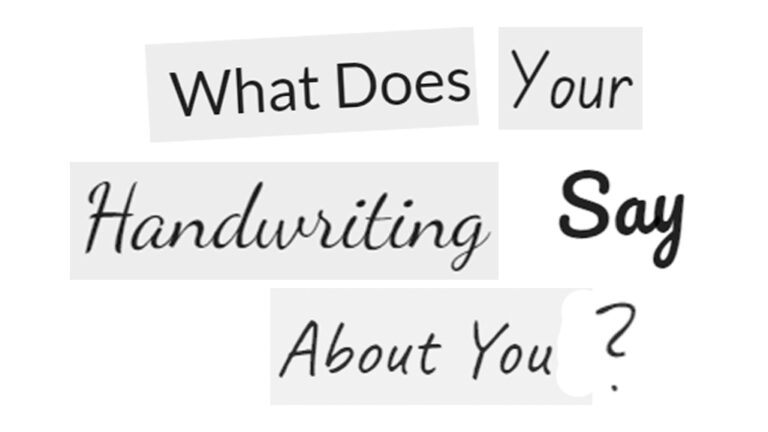
Introduction to Graphology
Graphology, often referred to as handwriting analysis, is the study and interpretation of handwriting to discern personality traits, emotional states, and behavioral tendencies. It operates on the premise that the way a person writes can reveal insights into their subconscious mind and underlying psychological characteristics. By examining various aspects of handwriting, such as size, shape, slant, pressure, spacing, and alignment, graphologists can uncover hidden patterns and traits.
Significance of Graphology
The significance of graphology lies in its ability to provide valuable insights into individuals’ personalities and behaviors. Handwriting is a unique form of self-expression, influenced by factors such as genetics, education, culture, and life experiences. As such, it offers a window into the inner workings of the human mind, offering clues about temperament, strengths, weaknesses, and interpersonal dynamics.
Graphology is widely used in various fields, including psychology, forensic science, recruitment, and personal development. Psychologists may utilize handwriting analysis as a supplementary tool in therapy sessions to gain deeper insights into their clients’ personalities and emotional states. In forensic investigations, handwriting analysis can help identify suspects or verify the authenticity of documents. Employers often employ graphology in the recruitment process to assess candidates’ suitability for specific roles based on personality compatibility and traits indicated in their handwriting.
Brief History
The roots of graphology can be traced back to ancient civilizations, where individuals believed that handwriting held mystical significance and could foretell the future. However, modern graphology as a systematic study emerged in the 19th century, pioneered by scholars such as Jean-Hippolyte Michon and Jules Crépieux-Jamin.
In the late 19th and early 20th centuries, graphology gained popularity in Europe, particularly in France and Germany, where it was integrated into academic and scientific discourse. Notable figures like Ludwig Klages and Max Pulver contributed to the development of graphological theory and methodology.
Throughout the 20th century, graphology continued to evolve, with practitioners refining techniques and establishing professional organizations to standardize practices and ethics. Today, graphology enjoys widespread recognition as a legitimate field of study, with research institutions, certification programs, and international associations dedicated to advancing its practice and understanding.
In summary, graphology offers a fascinating lens through which to explore the intricacies of human behavior and personality, blending art with science to unlock the mysteries of the mind through the written word.
Basics of Handwriting Analysis
Handwriting analysis, also known as graphology, involves the study of various aspects of a person’s handwriting to gain insights into their personality traits, behavior patterns, and emotional tendencies. Graphologists analyze several key elements of handwriting, including size, slant, pressure, and spacing. Each of these aspects offers valuable clues about an individual’s character and psychological makeup.
Size
The size of handwriting refers to the relative height and width of letters. Graphologists observe whether the handwriting is large, medium, or small in size. Here’s how size relates to personality traits:
- Large handwriting: Individuals with large handwriting tend to be outgoing, expressive, and sociable. They enjoy being the center of attention and may have a flair for creativity and innovation.
- Medium-sized handwriting: People with medium-sized handwriting are often balanced, adaptable, and pragmatic. They possess a moderate level of confidence and are capable of adjusting to various situations.
- Small handwriting: Those with small handwriting tend to be detail-oriented, focused, and introspective. They prefer to work meticulously and may be reserved in social settings.
Slant
The slant of handwriting refers to the angle at which letters are inclined on the page. Graphologists categorize slant as either forward, backward, or upright. Here’s how slant reflects personality traits:
- Forward slant: Handwriting that slants forward indicates warmth, emotionality, and responsiveness. People with a forward slant are often open-hearted, empathetic, and eager to connect with others.
- Backward slant: Handwriting that slants backward suggests introversion, caution, and self-restraint. Individuals with a backward slant may be reserved, analytical, and inclined towards introspection.
- Upright slant: Handwriting that remains upright indicates balance, objectivity, and rationality. People with an upright slant are often practical, logical, and level-headed in their approach to life.
Pressure
Pressure in handwriting refers to the amount of force applied while writing. Graphologists observe whether the writing appears light, moderate, or heavy in pressure. Here’s how pressure relates to personality traits:
- Light pressure: Handwriting with light pressure suggests sensitivity, gentleness, and delicacy. Individuals with light pressure may be emotionally sensitive, empathetic, and responsive to others’ needs.
- Moderate pressure: Handwriting with moderate pressure indicates stability, resilience, and self-assurance. People with moderate pressure are typically well-adjusted, confident, and capable of handling stress.
- Heavy pressure: Handwriting with heavy pressure reflects intensity, determination, and emotional depth. Individuals with heavy pressure may be passionate, tenacious, and deeply invested in their pursuits.
Spacing
Spacing in handwriting refers to the distance between letters, words, and lines on the page. Graphologists observe whether the spacing is wide, moderate, or narrow. Here’s how spacing reflects personality traits:
- Wide spacing: Handwriting with wide spacing suggests independence, freedom, and expansiveness. Individuals with wide spacing may value their personal space, autonomy, and need for exploration.
- Moderate spacing: Handwriting with moderate spacing indicates balance, harmony, and sociability. People with moderate spacing are often comfortable in social settings and value connections with others.
- Narrow spacing: Handwriting with narrow spacing reflects intimacy, closeness, and attention to detail. Those with narrow spacing may prefer close relationships and have a meticulous approach to tasks.
Handwriting Styles & Personalities
Handwriting, much like fingerprints, is unique to each individual. The way we form letters and connect them on paper can reveal a wealth of information about our personalities, habits, and emotions.
Personality Traits
- Analytical: Those who predominantly use print handwriting are often logical, methodical, and detail-oriented. They prefer to approach tasks with precision and clarity.
- Reserved: Print writers may tend to be more reserved or introverted, as print handwriting allows for a degree of detachment and control.
Cursive
Personality Traits
- Expressive: Cursive writers are often seen as expressive and outgoing. They may enjoy communicating their thoughts and ideas freely, valuing creativity and spontaneity.
- Emotional: Cursive handwriting tends to flow more naturally, reflecting the emotional state of the writer. High variability in cursive may indicate mood swings or sensitivity to external factors.
Messy
Personality Traits
- Creative: Messy handwriting is often associated with creative thinkers. These individuals may have innovative ideas but struggle with conventional organization.
- Impulsive: Messy handwriting can suggest impulsiveness or a lack of attention to detail. Writers with messy handwriting may prioritize speed and efficiency over neatness.
Neat
Personality Traits
- Organized: Neat handwriting reflects a sense of order and organization. People with neat handwriting tend to be methodical, responsible, and reliable in their approach to tasks.
- Perfectionist: Neat writers may have perfectionist tendencies, striving for precision and accuracy in their work. They may become frustrated with imperfections or mistakes.
Examples of Handwriting Samples
Print Handwriting
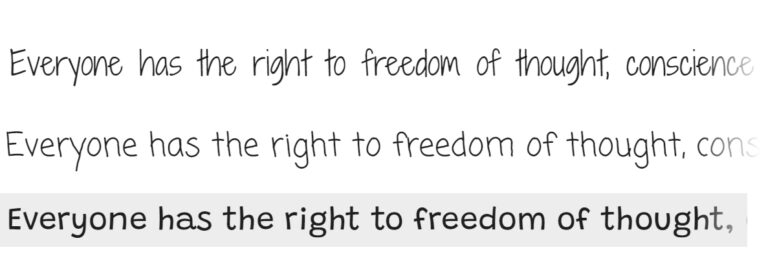
Interpretation: The print handwriting sample features clear, evenly spaced letters with consistent sizing. This suggests a logical and analytical personality, with a preference for structure and precision in communication.
Cursive Handwriting
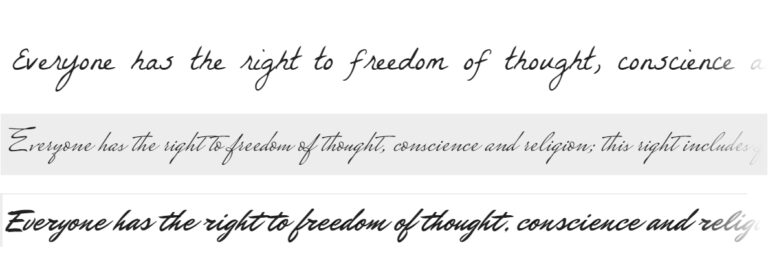
Interpretation: The cursive handwriting sample exhibits fluid strokes and connected letters, indicating an expressive and outgoing personality. The variability in letter size and spacing suggests emotional sensitivity and a tendency towards spontaneity.
Messy Handwriting
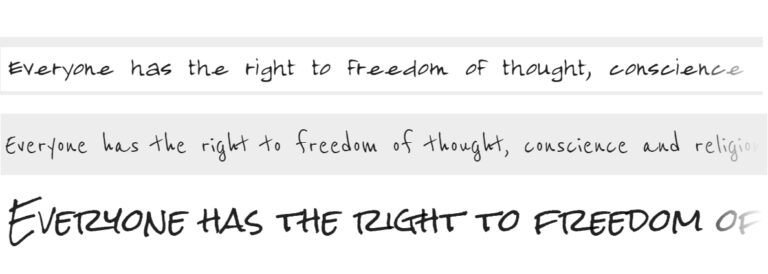
Interpretation: The messy handwriting sample shows irregular letter formations and inconsistent spacing, characteristic of a creative thinker who may prioritize speed over neatness. This individual may struggle with conventional organization but excel in generating innovative ideas.
Neat Handwriting
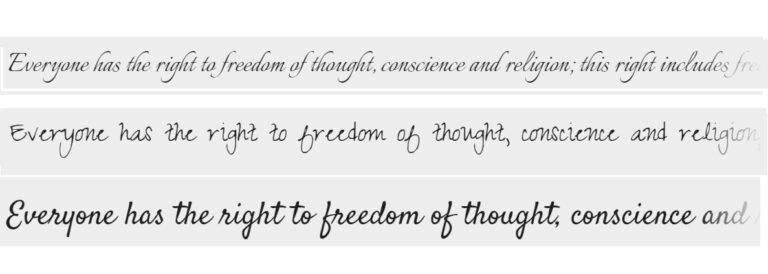
Interpretation: The neat handwriting sample displays precise letter formations and uniform spacing, reflecting an organized and detail-oriented personality. This individual likely values accuracy and takes pride in presenting their work with professionalism and clarity.
Size and Shape of Letters
One of the fascinating aspects of handwriting analysis is how the size and shape of letters can offer valuable insights into various personality traits. Whether you write with large, bold letters or small, delicate ones, each stroke can paint a picture of who you are.
Size Matters
- Large Letters: If your handwriting features large letters, it often indicates that you are outgoing, confident, and enjoy being the center of attention. You might have a bold and expressive personality, unafraid to speak your mind and take on challenges.
- Small Letters: Conversely, small handwriting suggests introversion and attention to detail. You may be reserved, thoughtful, and prefer to keep your thoughts and feelings private. People with small handwriting tend to be meticulous and focused, paying close attention to the finer points of life.
Shape Speaks Volumes
- Round Letters: Rounded letters in handwriting often indicate a warm, friendly, and nurturing personality. You are likely empathetic, sensitive, and enjoy forming deep connections with others. Your approachable nature makes you a popular confidant among friends and family.
- Angular Letters: On the other hand, angular letters suggest a more logical, analytical, and decisive individual. You prefer structure and organization in your life and are often seen as practical and efficient. While you may not always wear your emotions on your sleeve, your sharp intellect and problem-solving skills are highly valued by those around you.
Emotional Stability
- Consistent Size: Consistency in the size of letters demonstrates emotional stability and self-control. You are likely reliable, composed, and able to navigate life’s ups and downs with ease. Your steady demeanor makes you a pillar of strength for others during challenging times.
- Varying Size: Conversely, erratic changes in letter size may indicate mood swings and emotional volatility. You might experience highs and lows more intensely, finding it challenging to maintain equilibrium in tumultuous situations. Learning to regulate your emotions can lead to greater peace of mind and stability.
Attention to Detail
- Neat Handwriting: Neat, well-formed letters suggest a meticulous attention to detail and a desire for orderliness. You excel in environments where precision and accuracy are valued, and your conscientious nature ensures that tasks are completed to the highest standard.
- Messy Handwriting: Conversely, messy handwriting may indicate a more free-spirited and creative personality. You thrive in environments that allow for spontaneity and exploration, often thinking outside the box to find innovative solutions to problems. While your handwriting may lack polish, your imagination knows no bounds.
Slant of Handwriting
Revealing Emotional Tendencies & Interpersonal Relationships
The slant of handwriting refers to the direction in which letters lean—whether they slope forward, backward, or remain upright. Surprisingly, this seemingly mundane aspect of handwriting can offer profound insights into an individual’s emotional state and interpersonal dynamics.
Forward Slant
Handwriting that slants forward suggests a person who is outgoing, expressive, and emotionally responsive. Individuals with a forward slant are often open-hearted, enthusiastic, and eager to connect with others on an emotional level. They tend to wear their hearts on their sleeves, readily sharing their feelings and forming close bonds with those around them. In interpersonal relationships, they are often warm, empathetic, and nurturing, valuing emotional connection and intimacy.
However, a pronounced forward slant may also indicate impulsiveness, volatility, or a tendency to be overly emotional. While these individuals are quick to express themselves, they may struggle with emotional stability and may be prone to mood swings or heightened sensitivity to criticism.
Backward Slant
Conversely, handwriting that slants backward suggests a more reserved, introspective personality. Individuals with a backward slant tend to be private, cautious, and self-reliant. They may be guarded when it comes to expressing emotions, preferring to keep their feelings close to the chest. While they value personal autonomy and independence, they may also struggle with trust issues and find it challenging to open up to others.
On a positive note, a backward slant can indicate a thoughtful, analytical mind with a keen attention to detail. These individuals are often pragmatic and discerning, approaching life with a rational, logical mindset. However, they may also be perceived as aloof or distant in interpersonal relationships, as they may find it difficult to connect on an emotional level.
Upright Slant
Handwriting that remains upright—neither leaning forward nor backward—suggests a balanced, composed personality. Individuals with an upright slant are typically well-adjusted, adaptable, and emotionally resilient. They possess a stable, even-keeled temperament and are capable of navigating life’s ups and downs with grace and composure.
In interpersonal relationships, those with an upright slant are reliable, trustworthy, and grounded. They offer a sense of stability and dependability to those around them, often serving as pillars of strength during challenging times. While they may not be as outwardly expressive as those with a forward slant, they form deep, enduring connections based on mutual respect and understanding.
Pressure & Penmanship
One of the fascinating aspects of handwriting analysis is the examination of the pressure applied while writing and the quality of penmanship. These seemingly mundane details can offer profound insights into an individual’s personality traits, energy levels, emotional intensity, and level of self-discipline.
Pressure: A Window to Energy Levels and Emotional Intensity
The pressure exerted on the paper while writing can vary significantly from person to person. Light pressure typically suggests a gentle, sensitive nature, while heavy pressure indicates a more intense, passionate demeanor.
- Light Pressure: Individuals who write with light pressure often possess a gentle and delicate disposition. They may be sensitive to their surroundings, empathetic towards others’ feelings, and prefer harmony in their relationships. However, they might also be perceived as cautious or reserved.
- Heavy Pressure: On the other hand, those who apply heavy pressure tend to be more assertive, passionate, and emotionally intense. They approach life with vigor and enthusiasm, tackling challenges with determination and zeal. However, they may also be prone to stress or emotional outbursts, as they invest deeply in their endeavors and relationships.
Penmanship: Reflecting Self-Discipline and Attention to Detail
The quality of penmanship, including factors such as legibility, consistency, and neatness, can provide valuable insights into an individual’s level of self-discipline and attention to detail.
- Neat and Consistent Handwriting: Individuals with neat and consistent handwriting often exhibit a high level of self-discipline and attention to detail. They are organized, methodical, and strive for precision in their work and communication. They value order and structure in their lives, and their meticulous approach extends beyond handwriting to various aspects of their personal and professional endeavors.
- Messy or Illegible Handwriting: Conversely, messy or illegible handwriting may suggest a more relaxed or spontaneous approach to life. While these individuals may be creative, innovative, and adaptable, they may also struggle with organization and consistency. They may prioritize ideas and concepts over the finer details, leading to occasional disorganization or lack of follow-through.
Spacing & Alignment
Revealing Insights into Communication Style, Organization, and Emotional Openness
In the intricate world of handwriting analysis, the spacing between words and lines, along with the alignment of letters, serves as a rich source of clues about an individual’s personality and psychological makeup. Let’s delve into how these seemingly mundane aspects of handwriting can unveil profound insights.
Spacing Between Words
The spacing between words in a person’s handwriting can offer valuable insights into their communication style and interpersonal tendencies. Consider the following scenarios:
- Wide Spacing: Individuals who tend to space their words widely often value independence and personal space. They may exhibit a preference for autonomy and may require ample room for self-expression. This spacing style suggests a need for freedom and may indicate a reluctance to feel crowded or constrained.
- Narrow Spacing: Conversely, individuals who tightly space their words may be more inclined toward intimacy and connection. They may possess a strong desire for closeness in relationships and may thrive in environments characterized by collaboration and teamwork. Narrow spacing can suggest a propensity for emotional closeness and a comfort with interpersonal interactions.
Spacing Between Lines
The vertical spacing between lines of handwriting can also provide valuable insights into an individual’s organizational skills and emotional state:
- Consistent Line Spacing: A consistent spacing between lines typically reflects a methodical and organized approach to life. Individuals who maintain uniformity in their line spacing tend to value structure and orderliness. They may exhibit a preference for clarity and efficiency in their endeavors, demonstrating a disciplined and systematic mindset.
- Irregular Line Spacing: On the other hand, irregular spacing between lines may indicate fluctuations in mood or emotional stability. Sudden changes in line spacing, such as erratic fluctuations or uneven gaps, can suggest periods of emotional turmoil or heightened stress levels. Individuals who display irregular line spacing may benefit from strategies to manage their emotions and maintain equilibrium.
Alignment of Letters
The alignment of letters within words provides additional insights into an individual’s emotional openness and self-expression:
- Left-Aligned: Left-aligned handwriting typically indicates a focus on the past or a tendency to dwell on memories and experiences. Individuals who align their letters to the left may exhibit a reflective or nostalgic disposition, drawing inspiration from their personal history. They may possess a strong connection to tradition and may value heritage and ancestry.
- Right-Aligned: Conversely, right-aligned handwriting suggests a forward-looking perspective and a focus on the future. Individuals who align their letters to the right may demonstrate optimism and aspiration, eagerly embracing new opportunities and possibilities. Right-aligned handwriting often reflects a sense of anticipation and excitement about what lies ahead.
Signature Analysis
Signatures hold a unique place in the realm of graphology. Unlike regular handwriting, which may vary depending on the context or mood, signatures are deliberate and often meticulously crafted. They serve as a personal seal, representing one’s identity and standing as a symbol of authenticity. In the world of graphology, the study of signatures unveils a wealth of insights into an individual’s self-image, public persona, and underlying personality traits.
Significance of Signatures
While regular handwriting reflects the natural flow of thoughts and emotions, signatures are intentional and purposeful. They encapsulate how we wish to be perceived by the world. As such, they often differ from regular handwriting in several ways:
- Consistency and Precision: Signatures tend to be more consistent and stable compared to everyday handwriting. People often develop a specific signature style and stick to it over time.
- Legibility vs. Flourishes: Unlike regular handwriting, where legibility is often prioritized for effective communication, signatures may feature elaborate flourishes, loops, or embellishments. These elements are carefully chosen to convey status, creativity, or a sense of individuality.
- Size and Proportion: While regular handwriting may vary in size and proportion based on the writer’s mood or context, signatures often maintain a consistent size and proportion. Changes in size or emphasis within a signature can indicate shifts in confidence or self-perception.
Interpreting Signature Elements
- Legibility: A legible signature suggests openness and transparency. Individuals with clear and readable signatures tend to be straightforward and authentic in their interactions. Conversely, illegible signatures may indicate a desire for privacy or a reluctance to reveal one’s true self.
- Size: The size of a signature relative to the rest of the writing can offer clues about self-confidence and assertiveness. A large signature suggests a strong ego and a desire to command attention, while a smaller signature may indicate humility or a preference for understatement.
- Embellishments: Flourishes, loops, and decorative elements in a signature reflect creativity, imagination, and a desire for self-expression. However, excessive embellishments may also signal a need for validation or a tendency towards self-indulgence.
- Consistency: Consistency in signature style demonstrates reliability and a strong sense of identity. Abrupt changes in signature appearance may signify a desire for reinvention or a shift in self-perception.
- Alignment: The alignment of a signature relative to the baseline of the writing reflects a sense of balance and harmony. Signatures that slant upwards may suggest optimism and ambition, while downward slanting signatures may indicate introspection or self-doubt.
Handwriting Changes
Handwriting is not static; it evolves over time and can vary depending on the situation, emotional state, and other external factors. Understanding how handwriting changes can offer valuable insights into an individual’s personal growth, emotional well-being, and life experiences.
Evolution Over Time
Just as individuals grow and change throughout their lives, so too does their handwriting. The handwriting of a child is often quite different from that of an adult, reflecting changes in motor skills, cognitive development, and personality. As people mature, their handwriting may become more refined, legible, and consistent, reflecting increased confidence and self-awareness.
Influence of Life Events
Life events, both positive and negative, can leave their mark on handwriting. For example, experiencing a significant life milestone such as graduation, marriage, or starting a new job may result in changes to handwriting that reflect increased maturity, confidence, and stability. Conversely, periods of stress, grief, or upheaval may manifest in handwriting that is less controlled, with erratic strokes and uneven spacing.
Reflection of Emotional State
Emotions play a significant role in shaping handwriting. When individuals are feeling happy, relaxed, and confident, their handwriting may appear fluid, legible, and well-formed. Conversely, feelings of anxiety, sadness, or anger can influence handwriting in various ways, such as increased pressure, shaky lines, or cramped spacing. Observing these changes can provide insight into an individual’s emotional state and help identify areas where support may be needed.
Adaptation to Situational Demands
Handwriting can also adapt to meet the demands of different situations. For example, individuals may unconsciously alter their handwriting when writing formal documents, such as resumes or cover letters, to convey professionalism and competence. Similarly, handwritten notes or letters to loved ones may exhibit a more relaxed and intimate style, reflecting the nature of the relationship and the emotional connection between sender and recipient.
Tips
Understanding what your handwriting reveals about you can be a fascinating journey of self-discovery. Here are some practical tips for individuals interested in analyzing their own handwriting for personal development or understanding others better:
Start with Self-Reflection: Begin by examining your own handwriting. Take note of the size, shape, slant, pressure, spacing, and alignment of your letters. Reflect on what these aspects might indicate about your personality traits, emotions, and behaviors.
Compare Different Samples: Collect samples of your handwriting from various contexts, such as writing quickly versus writing slowly, or when you’re feeling stressed versus relaxed. Compare these samples to identify patterns and variations in your handwriting under different circumstances.
Seek Feedback: Share your handwriting samples with trusted friends or family members and ask for their impressions. Sometimes, others can provide valuable insights that you might not have noticed yourself.
Experiment with Handwriting Changes: Try consciously altering certain aspects of your handwriting, such as writing with a different slant or adjusting the size of your letters. Notice how these changes affect your writing experience and if they reflect any shifts in your mood or mindset.
Explore Graphology Resources: Delve deeper into the study of graphology by exploring reputable books, articles, and online resources on the subject. Look for resources authored by experienced graphologists or psychologists who offer practical insights and guidance.
Books:
- “Handwriting Analysis: The Complete Basic Book” by Karen Amend and Mary S. Ruiz
- “The Complete Idiot’s Guide to Handwriting Analysis” by Sheila Lowe
- “The Definitive Book of Handwriting Analysis: The Complete Guide to Interpreting Personalities, Detecting Forgeries, and Revealing Brain Activity Through the Science of Graphology” by Marc Seifer
Websites:
- Handwriting University: www.handwritinguniversity.com
- International Graphology Association: www.graphologyinternational.com
- American Handwriting Analysis Foundation: www.ahafhandwriting.org
Online Courses:
Conclusion
In conclusion, the study of handwriting, known as graphology, offers a captivating window into the depths of human personality. Throughout this article, we’ve delved into the various aspects of handwriting analysis, from the size and shape of letters to the alignment and pressure applied while writing. We’ve explored how each of these elements can reveal facets of one’s character, providing insights into communication style, emotional tendencies, and even self-image.
It’s important to remember that while handwriting analysis can offer valuable insights, it is not a definitive science. Individual differences, cultural influences, and situational factors all play a role in shaping handwriting. Therefore, it’s essential to approach handwriting analysis with an open mind and a healthy dose of skepticism.
Nevertheless, by taking the time to examine our handwriting and reflect on its nuances, we can gain a deeper understanding of ourselves and others. Whether we’re looking to uncover hidden strengths, identify areas for personal growth, or simply gain insight into our relationships, handwriting analysis can serve as a powerful tool for self-discovery.